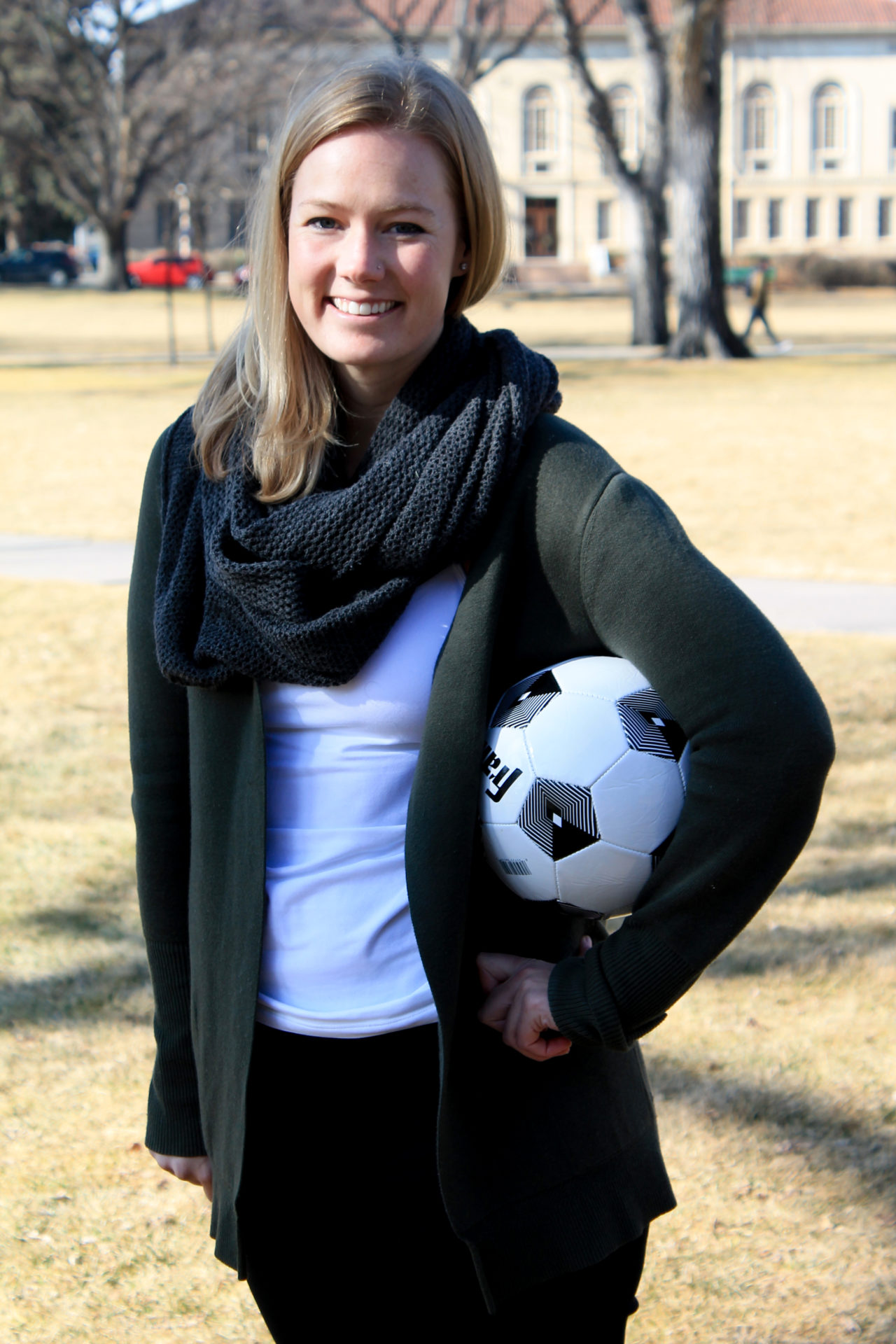Story by Rachel Sipes
When is it safe to return to play?
Jaclyn Stephens, an assistant professor in the Department of Occupational Therapy at Colorado State University, was interested in that very question. Inspired to gain further knowledge, Stephens began her research in athletes who have had concussions.
“Often athletes must stand on one foot while scanning a field while deciding where to throw the ball they are holding,” shared Stephens. “But our current return-to-play evaluations that just ask them to stand on one foot without doing anything else are not challenging enough.”
In her recent TEDx CSU Talk, “Returning to ‘Athlete’ after Concussion,” Stephens approached the audience and asked, “Are you a person whose role involves playing a sport? And what happens, if all of a sudden you can’t play that sport? Have you lost yourself?”
“We are not trying to scare people, and we are also not trying to remove people from sports,” said Stephens. “But we know that one of the greatest risk factors for sustaining a concussion is having had a prior concussion.”
Challenging both the mind and body
 “Most current return-to-play protocols do not require an integration of motor and cognitive skills,” shared Stephens. “I think the cognitive system needs to be challenged and rehabilitated simultaneously with the motor system.”
“Most current return-to-play protocols do not require an integration of motor and cognitive skills,” shared Stephens. “I think the cognitive system needs to be challenged and rehabilitated simultaneously with the motor system.”
This idea led to Stephen’s collaboration with three students in the Department of Computer Science at CSU: Ariana Mims, Kareem Youssef and Alex Malott. Stephens and these students have now developed a virtual reality football field where athletes are required to multi-task on the field.
In this virtual reality post-concussion test, Stephens and her fellow researchers are able to evaluate multitasking by asking the athletes to perform both motor and cognitive tasks. This better mimics the demands of sports by requiring athletes to hold remotes in their hands as they tackle, throw and dodge opponents. Information is relayed through sensors regarding how quickly the athletes move in order to evaluate the quality of those movements.
“This might illustrate when an athlete still has residual concussion-induced deficits, suggesting incomplete recovery,” continued Stephens. “Going back to play before allowing the concussion to fully heal might put these athletes at an increased risk of further injuries. These are high performing athletes and they often think they are ready to go back before it might be safe to return to play.”
Future of virtual reality
As these virtual reality environments continue to develop, Stephens hopes to be able to measure the accuracy of the throwing or kicking mechanisms, monitor if movements are excessive or limited, and evaluate precise movements of the head and neck. Stephens shared that their main objective is to create challenging tasks that better imitate the demands of sports. Therefore, Stephens is currently working on a soccer field prototype with Francisco Ortega, assistant professor in the Department of Computer Science and master’s student, Aditya Raikwar.
Stephens is looking forward to continuing her post-concussion research and integrating it with the CSU athletic population and athletic training staff. She also hopes to create realistic and challenging virtual reality environments in collaboration with the Department of Computer Science and the Department of Design and Merchandising.
NIH grant project
 Stephens’ postdoctoral research on pediatric traumatic brain injury led her to her current work with adolescent and young adult athletes with sports-related concussions. After her postdoctoral fellowship, Stephens came to CSU in 2017 to acquire mentorship from Patti Davies, professor in the Department of Occupational Therapy, who also has training in both occupational therapy and neuroscience. Together they use neuroimaging techniques to evaluate the motor and cognitive abilities of individuals, like athletes who have experienced a concussion.
Stephens’ postdoctoral research on pediatric traumatic brain injury led her to her current work with adolescent and young adult athletes with sports-related concussions. After her postdoctoral fellowship, Stephens came to CSU in 2017 to acquire mentorship from Patti Davies, professor in the Department of Occupational Therapy, who also has training in both occupational therapy and neuroscience. Together they use neuroimaging techniques to evaluate the motor and cognitive abilities of individuals, like athletes who have experienced a concussion.
Stephens recently received some exciting news. Her hard work in the area of athletes and concussion has earned her a National Institutes of Health Career Development Award from the National Center of Medical Rehabilitation Research. The total award, roughly $640,000, will cover a portion of her salary and provide research funds each year for the next five years. As part of the grant, Stephens will evaluate athletes with a recent concussion who have been “cleared” to return to play. The evaluation process will involve using innovative neuroimaging and behavioral techniques to identify neural mechanisms that may explain why athletes with a concussion are vulnerable to a repeat injury.
Stephens shared that, in the future, she anticipates working with other neurological populations such as people who have Parkinson’s disease, multiple sclerosis or stroke. She expects that some of what she is learning in sports-related concussion may be applicable to these populations.
So, when is it safe to return to play? Stephens and her colleagues will continue to research that question as they use and enhance their virtual reality environments. Hopefully this will help post-concussion athletes more safely return to the sports that mean so much to them.
The Department of Occupational Therapy is part of CSU’s College of Health and Human Sciences.